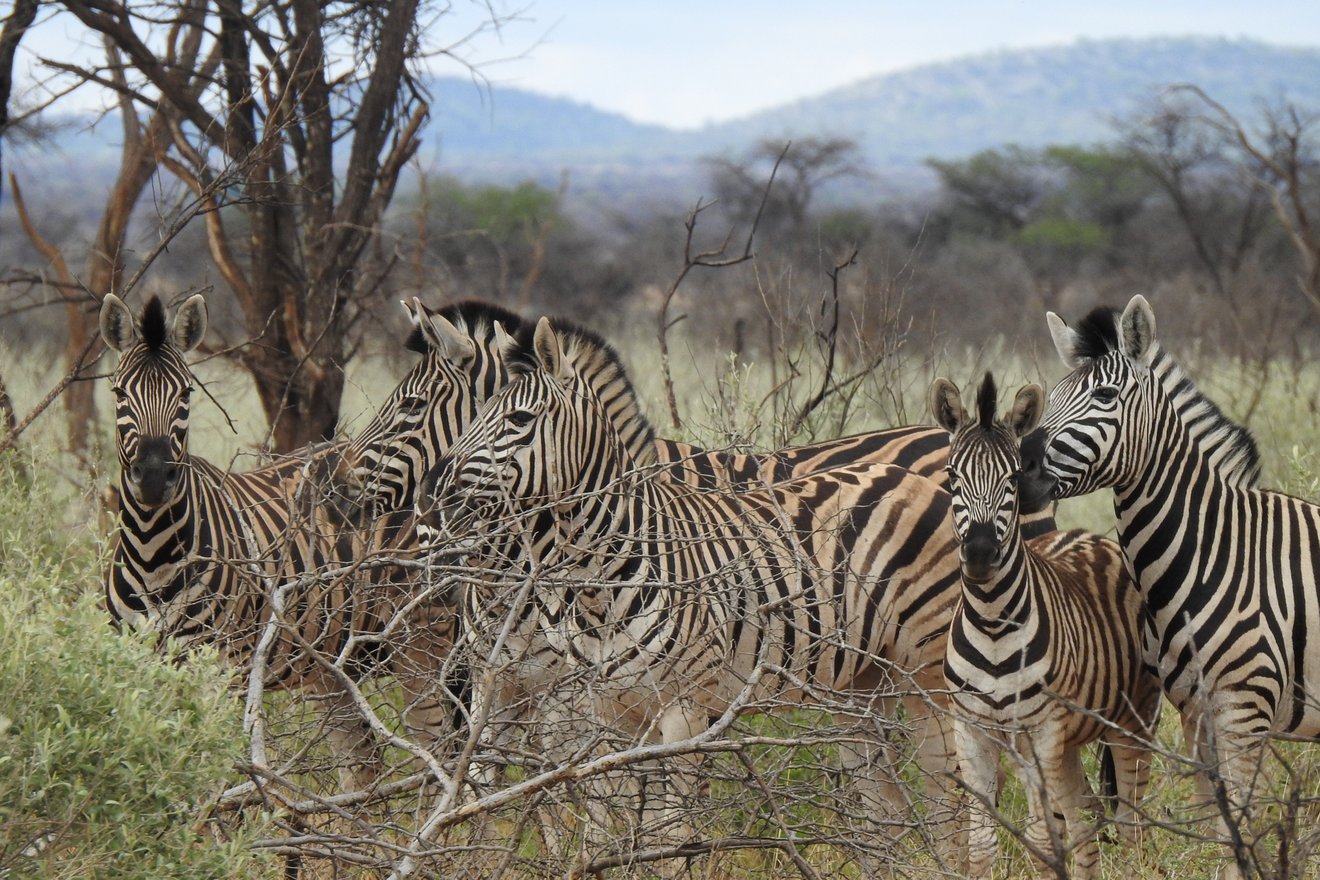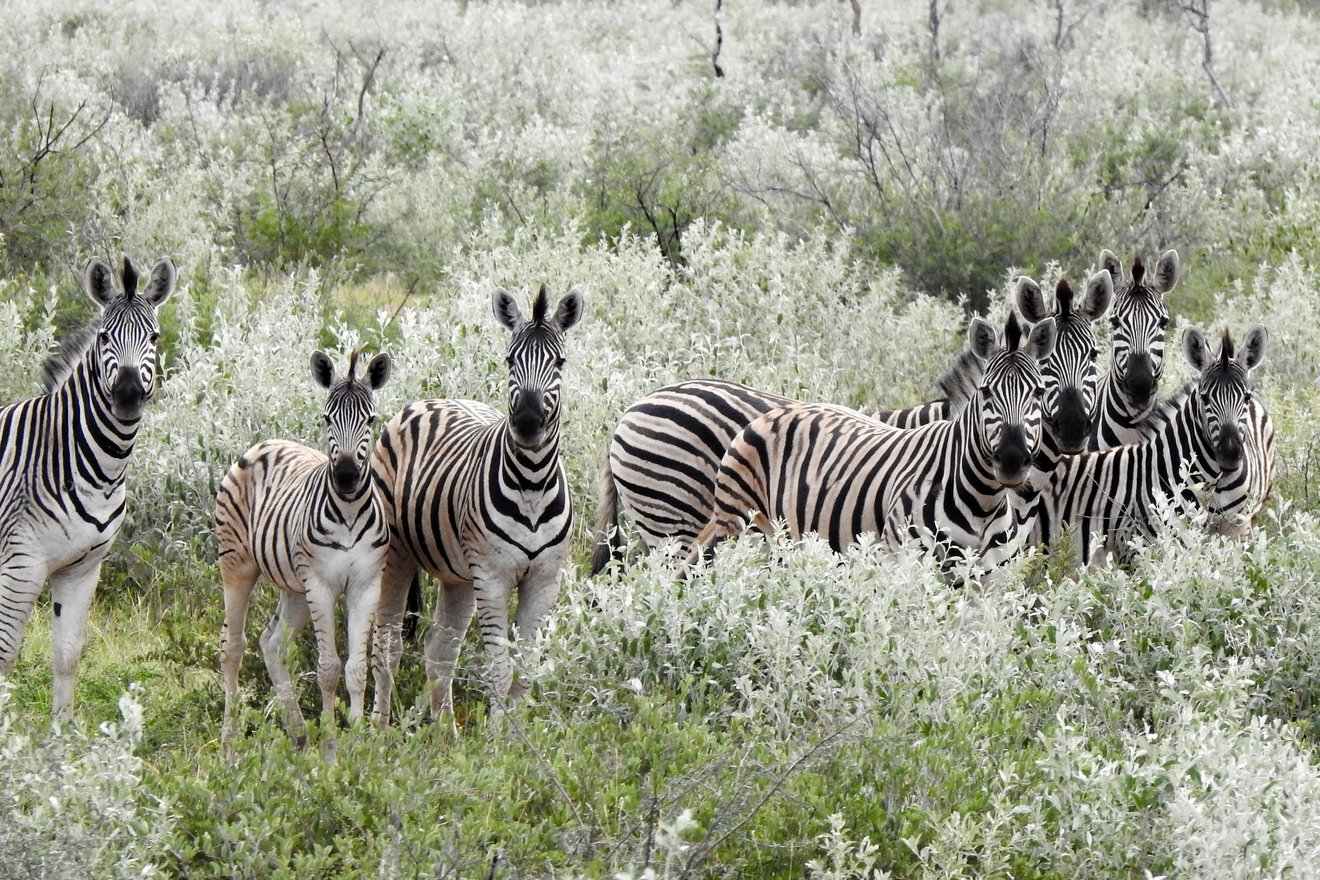Zebras are indispensable to the African savanna, a "must-have" in the photo collections of safari travellers. These peaceful herbivores can be found in a variety of habitats, from open savannas and bushy grasslands to the mountainous regions of East and Southern Africa. Highly adaptable, they inhabit both wet and dry regions, with their primary range extending from Southern Ethiopia and Sudan in the north to South Africa in the south.
Symbolic
Plains Zebra
GUIDE KNOWLEDGE: BURCHELLS ZEBRA
Plains zebras live in social herds consisting of a dominant stallion, several mares, and their foals. This herd structure offers protection from predators and provides a safe environment for raising young. The stallion aggressively defends his herd against rivals and potential threats. Zebras are ready to mate year-round, though breeding peaks during the rainy season when food is most abundant. After a gestation period of about 12 to 13 months, the mare gives birth to a single foal. The foals are precocial, able to stand and follow the herd shortly after birth.
Plains zebras are herbivores, primarily grazing on various grasses, but they also consume leaves and bark, particularly in the dry season when grass is scarce. Their digestive system is specialized to process large amounts of fibrous food, enabling them to survive in areas unsuitable for other herbivores. The main predators of plains zebras are lions, hyenas, and wild dogs. However, their excellent escape abilities and social behaviors, including vigilant watch and warning calls, provide effective survival strategies.
Secret Code
The Mystery of Zebra Stripes
What is the significance of zebra stripes? For nearly 150 years, there have been various theories. Camouflage seems unlikely, as the black-and-white pattern stands out against the colors and shapes of the savanna. Some scientists suggest the stripes enhance mating prospects, while others believe they serve as a defense mechanism: the moving stripes of a zebra herd create a confusing image, making it difficult for attacking predators to focus on a single target. Another theory posits that the pattern evolved to protect against tsetse flies and other disease-carrying insects. A further explanation links striping to temperature regulation: in warmer regions, the patterns are said to be more pronounced, with the stripes clearer, acting as a natural air conditioning system by keeping air flowing over the differently colored stripes.
Whether for camouflage or thermoregulation, one thing is certain: every stripe pattern is unique; no two zebras have the same design. The zebra’s striping serves as an individual code, helping mother zebras, foals, and herd members identify each other alongside their scent.




